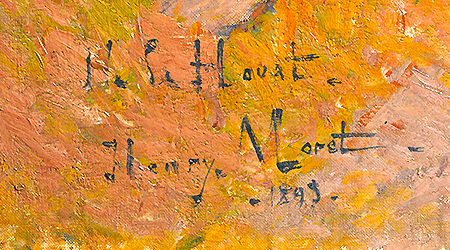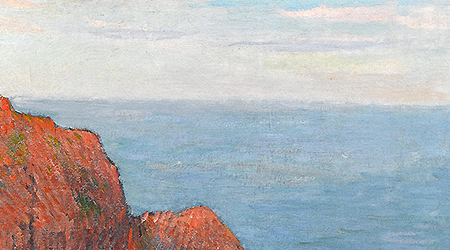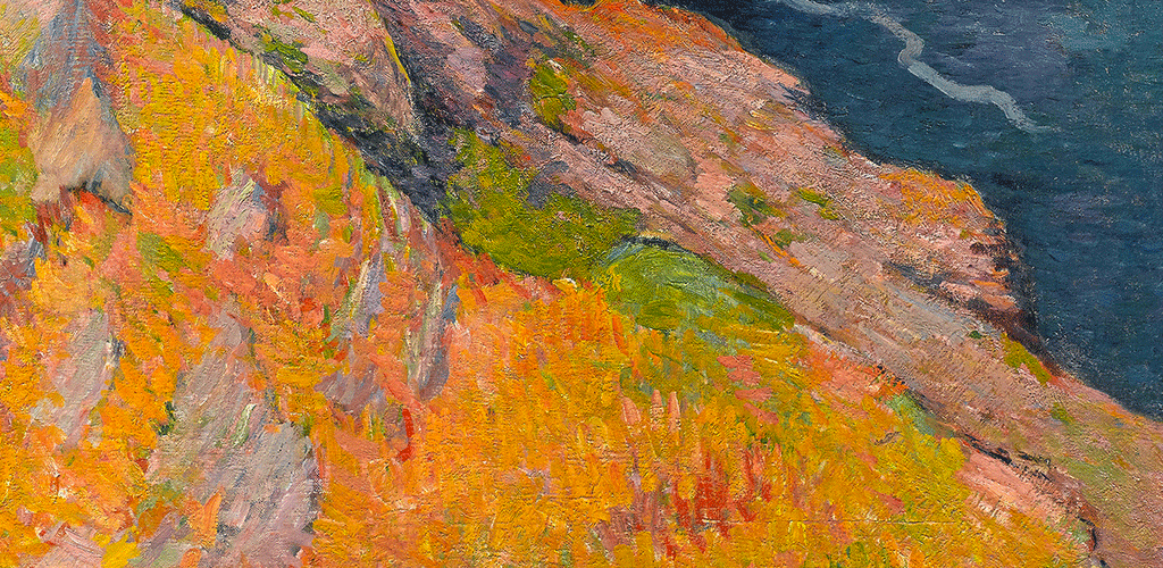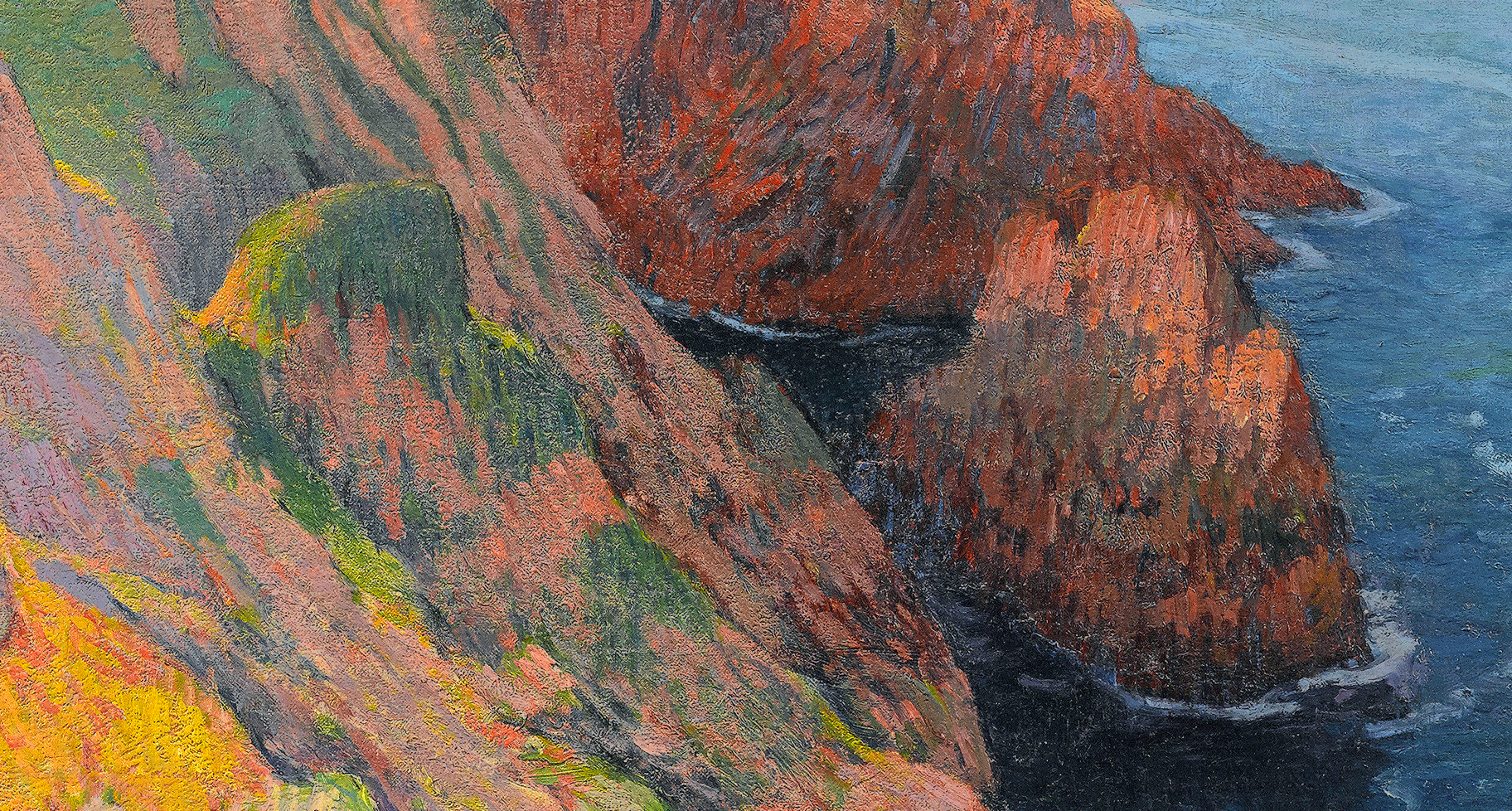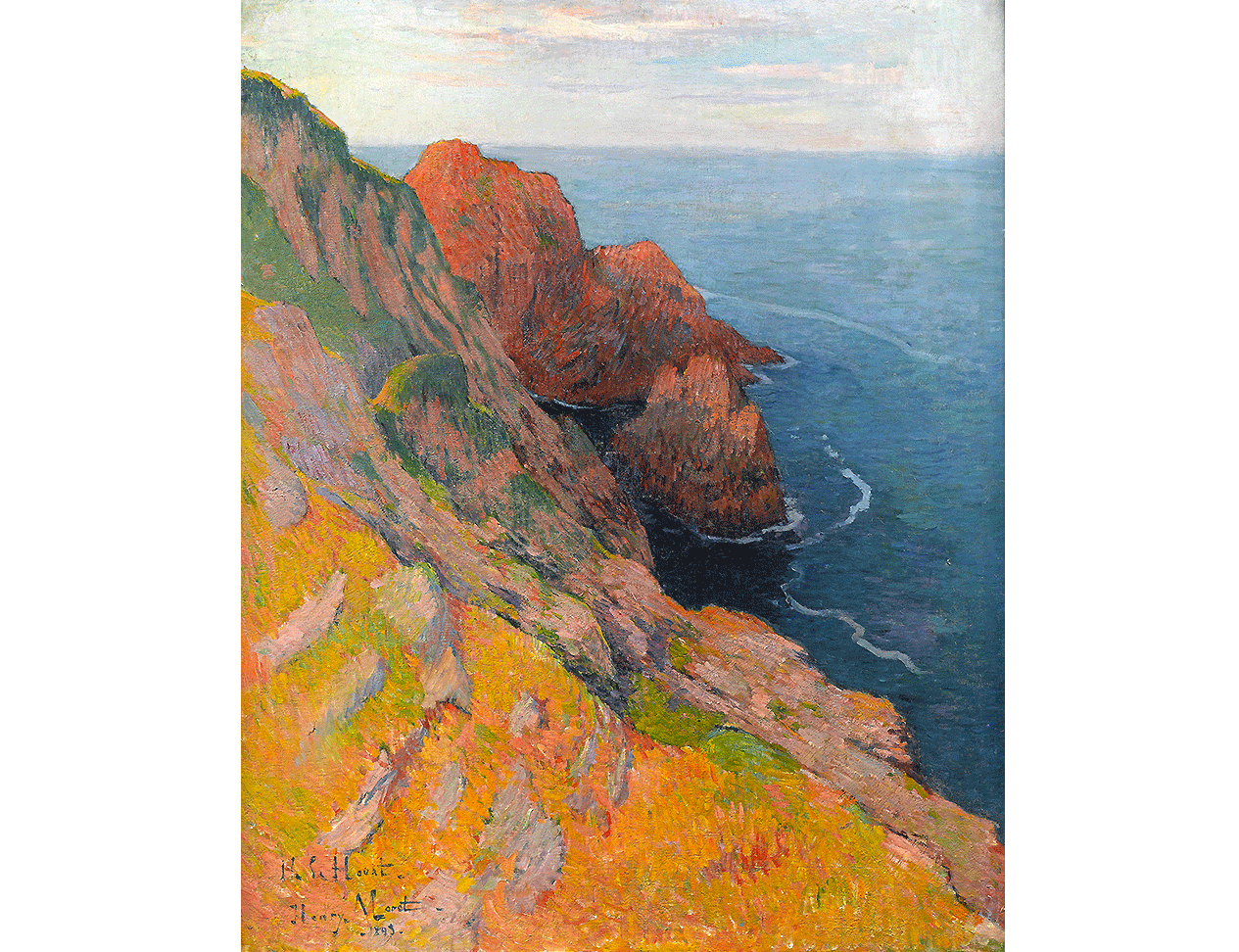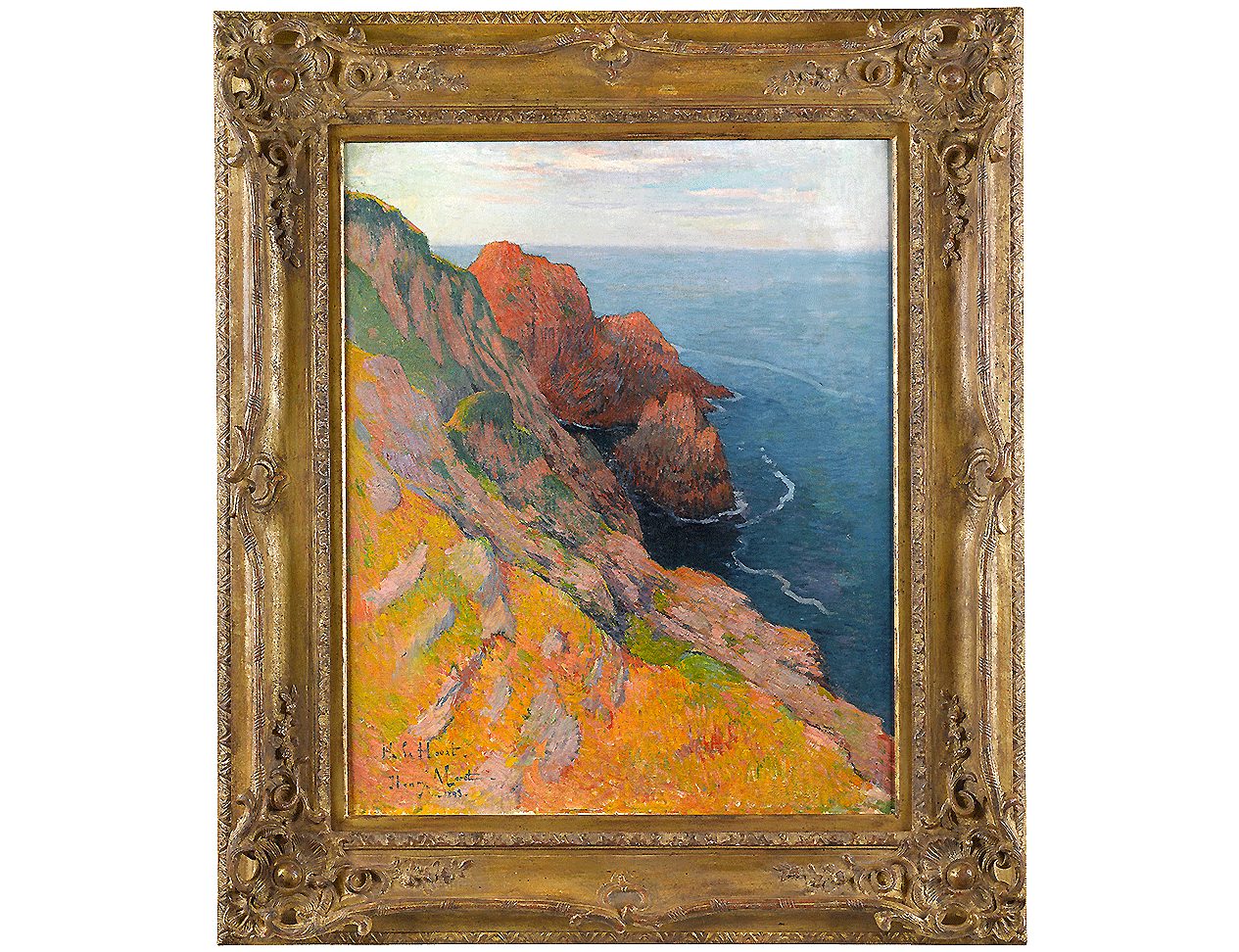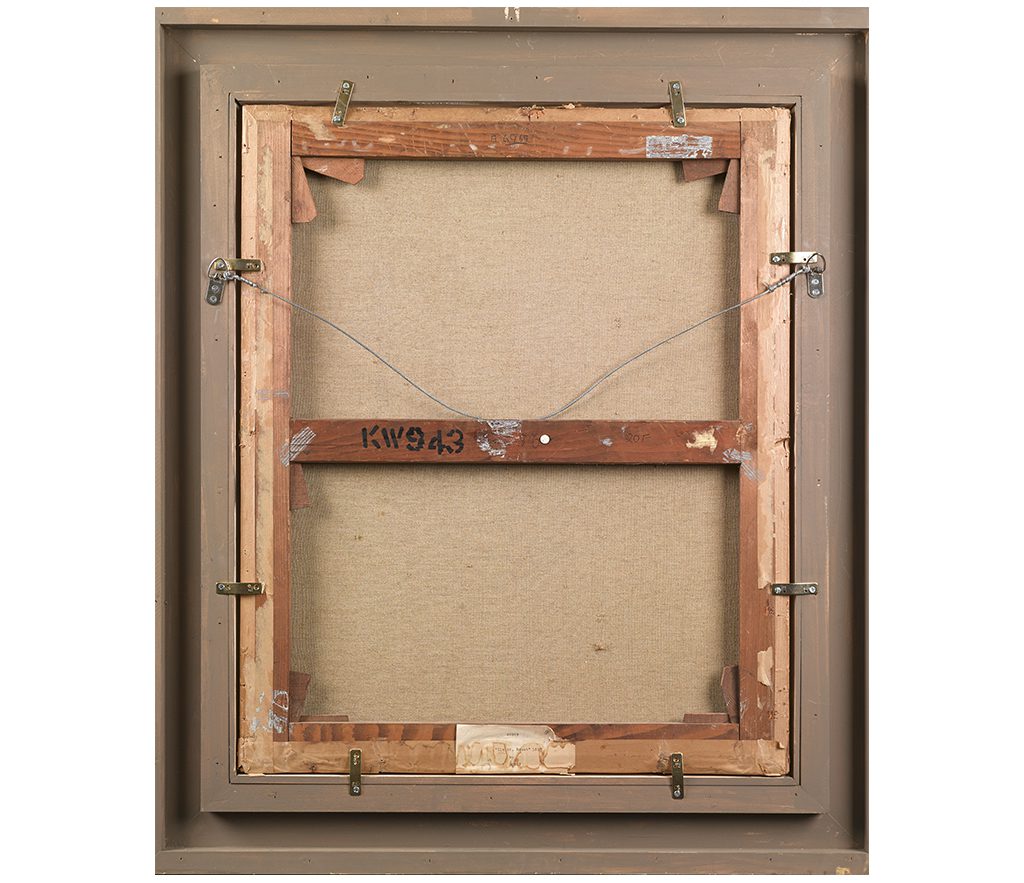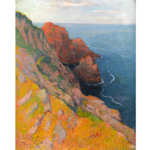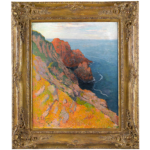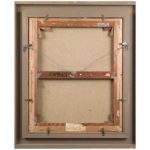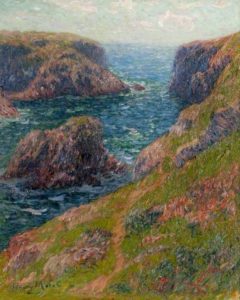Provenance
Arthur Tooth & Sons, London (no. A6969)
Private collection, London
The bold, saturated colours, vertiginous perspective and expressive brushwork of Île de Houat point to Henry Moret’s adherence to the techniques of Synthetism, a Post-Impressionist movement whose leading proponents included Paul Gauguin, Émile Bernard and Louis Anquetin. The painting dates from Moret’s years as a member of the Pont-Aven School, which lasted from 1888 until the mid-1890s. Île de Houat was completed two years after Moret left the Pont-Aven commune, and is an exceptional example of the rugged, dramatically lit coastal landscapes for which the artist is well known.
Although he was a native of Normandy and received academic training in Paris, Moret spent almost the entirety of his working life in Brittany. In 1888, he came to Pont-Aven, which had by then been an artist’s colony for over twenty years. Gauguin had just returned there from Martinique to embark on a second stay at the Pension Gloanec, a modest inn known to give generous credit to struggling artists. Despite his forceful personality, the young and impoverished Gauguin was at a loss without like-minded artists with whom to discuss the challenges of the avant-garde, and he welcomed Moret’s arrival at Gloanec’s in the summer. They were joined also by Emile Bernard, Charles Laval, and Ernest de Chamaillard and together they became known in Pont-Aven as the ‘Impressionists’, reportedly fraternising little with the other artists staying in the village. In 1889, also Moret worked with Gauguin in nearby Le Pouldu.
Moret’s earliest artistic training took place in the Breton town of Lorient under Ernest Corroller, a disciple of Corot and Courbet who introduced him to plein air painting. Later as a student in the Ecôle des Beaux-Arts in Paris under Henri Lehmann and Jean-Paul Laurens, his style betrayed leanings towards the Barbizon School of landscape painting. Throughout this period, he continued to spend time in Brittany, and his first submission to the Salon in 1880 was entitled Marée Basse; Côte de Bretagne. In the ensuing years, he led a peripatetic existence exploring the coastline of Brittany, while still exhibiting at the Paris Salon. The present painting depicts a view from a small island off the southern coast of Brittany.
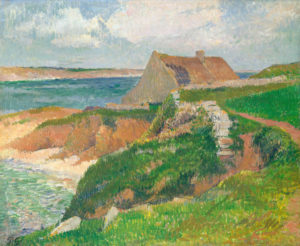
The Island of Raguenez, Brittany, French, 1890/1895, National Gallery of Art, Washington, DC
Île de Houat, bears all the hallmarks of the artist’s Pont-Aven period, which lasted from 1888 until the mid-1890s. In its palette and its handling of the medium, it compares closely with The Island of Raguenez, Brittany from the collection of the National Gallery of Art, Washington, DC. The abbreviated description of the motif in both of these paintings points to Moret’s adherence to the practices of Synthetism, a frequent subject of conversation at the Pension Gloanec in the summer of 1888. According to this technique, the artist was to identify the salient characteristics of a motif and deploy these in order to capture the essence of his subject. Influenced by Japanese woodcut prints, Gauguin also advocated description of a motif by means of unmodulated colour instead of modelling and tilting the perspective sharply up or downward. The result was an artistic accent considered suitable for the depiction of rural subjects and savage nature.
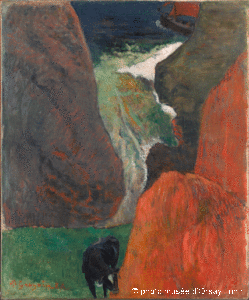
Paul Gauguin, Marine avec Vache, 1888, Musée d’Orsay, Paris
Gauguin, a charismatic and persuasive figure, believed that the painter should not ‘copy from nature too much. Art is an abstraction; derive this abstraction from nature while dreaming before it, but think more of creating than the actual result’. In Île de Houat, Moret simplifies the view to give a condensed account of his motif. Meanwhile, thanks to his handling of the brush, the surface of the canvas is animated by a network of shimmering strokes of colour that emphasises the medium and concurrently diminishes the pictorial content. Together with the simplification of form, these qualities are closely comparable with Gauguin’s Marine avec Vache (Musée d’Orsay, Paris), which depicts a scene close to Le Pouldu.
By remaining in Brittany throughout his mature career, Moret somewhat isolated himself from the art world. He was by nature a retiring man, and according to his entry in Benezit’s Dictionnaire des Peintres, what ‘counted against him, above all, was his excessive, kindly modesty… [which] contributed to his being little known’. Nevertheless, in 1895 he entered into an agreement with the Paris dealer Paul Durand-Ruel, who successfully sold his paintings to collectors in Europe and America. Moret’s style continued to evolve following his meeting with Gauguin, and by the mid-1890s, he had adopted the palette and brush-stroke of the Impressionists. It is instructive to compare the present work with his Cliffs at Port-Domois, Belle-Île (Glasgow Museums Resource Centre). This depicts a locale where Monet himself had worked in 1886 and it represents a remarkable change of approach in favour of the older artist’s style. While in Île de Houat colour is deployed to form a timeless synthesis of the subject, Cliffs at Port Domois seeks to convey the transient effects of light and weather on the momentary appearance of the landscape.
Works by the artist can be found in major museum collections such as the National Gallery of Art in Washington, DC, Musée d’Orsay in Paris, and the State Hermitage Museum in St Petersburg.
